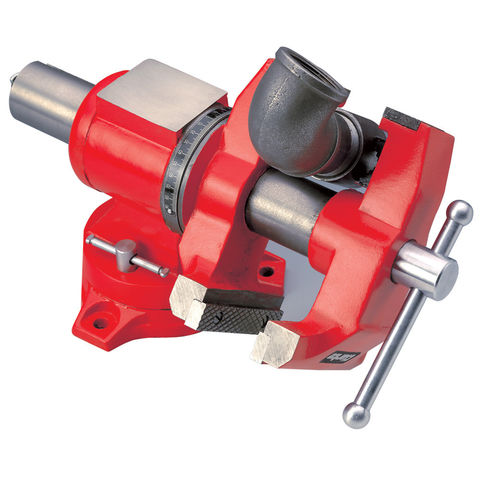
For Machining Purposes Cast Iron Is Considered
You can easily make a.app for Mac. Join Facebook to connect with Cah Winonx and others you may know. Download WinOnX for Mac free - PortalProgramas How To Run Windows Programs On A Mac - WinOnX on MacBook High Sierra free official version WinOnX 2 Pro. WinOnX on the Mac App Store - iTunes - AppleWinOnX 2.0.5 full for MacBook 10.13 download limetorrents.View the profiles of people named Cah Winonx.  Simply run the program drag or drop the.exe file.
Simply run the program drag or drop the.exe file.
Cast iron is an alloy that contains more than 2% carbon, and 1–3% silicon. That is favored by foundry-men over the cast steel for following reasons. For more accurate assessment, the effect of phosphorous is also considered. Wit Grzesik, in Advanced Machining Processes of Metallic Materials (Second Edition), 2017. B.1.2.6 Processing and applications of cast iron (a) Technical casting. (b) Machining In spite of the near-net shape of castings, the functional surfaces.
Casting is a manufacturing process in which a liquid material is usually poured into a mold, which contains a hollow cavity of the desired shape, and then allowed to solidify. The solidified part is also known as a casting, which is ejected or broken out of the mold to complete the process. Casting materials are usually metals or various time setting materials that cure after mixing two or more components together; examples are epoxy, concrete, plaster and clay. Casting is most often used for making complex shapes that would be otherwise difficult or uneconomical to make by other methods. Heavy equipment like machine tool beds, ships' propellers, etc. can be cast easily in the required size, rather than fabricating by joining several small pieces.[1]
Casting is a 7,000-year-old process. The oldest surviving casting is a copper frog from 3200 BC.[2]
History[edit]
Lost wax casting can be dated back to 4000 BC or the Chalcolithic period.[3] One of the oldest studied examples of this technique is a 6,000-year old amulet from Indus valley civilization.[4]
There were no pieces of lost wax found in the capital of Anyang during the Shane dynasty (1600-1040 BC) while a large amount (100,000 pieces) of piece-mould fragments were found. This led to the conclusion that lost wax was not performed in the capital during this dynasty. However, the discovery of a mask made using the investment moulding dated at around 1300 BC indicated that the lost wax technique may have influenced other regions in China.[3]
Types[edit]
Metal[edit]
In metalworking, metal is heated until it becomes liquid and is then poured into a mold. The mold is a hollow cavity that includes the desired shape, but the mold also includes runners and risers that enable the metal to fill the mold. The mold and the metal are then cooled until the metal solidifies. The solidified part (the casting) is then recovered from the mold. Subsequent operations remove excess material caused by the casting process (such as the runners and risers).
Plaster, concrete, or plastic resin[edit]
Plaster and other chemical curing materials such as concrete and plastic resin may be cast using single-use waste molds as noted above, multiple-use 'piece' molds, or molds made of small rigid pieces or of flexible material such as latex rubber (which is in turn supported by an exterior mold). When casting plaster or concrete, the material surface is flat and lacks transparency. Often topical treatments are applied to the surface. For example, painting and etching can be used in a way that give the appearance of metal or stone. Alternatively, the material is altered in its initial casting process and may contain colored sand so as to give an appearance of stone. By casting concrete, rather than plaster, it is possible to create sculptures, fountains, or seating for outdoor use. A simulation of high-quality marble may be made using certain chemically-set plastic resins (for example epoxy or polyester which are thermosetting polymers) with powdered stone added for coloration, often with multiple colors worked in. The latter is a common means of making washstands, washstand tops and shower stalls, with the skilled working of multiple colors resulting in simulated staining patterns as is often found in natural marble or travertine.
Fettling[edit]
Raw castings often contain irregularities caused by seams and imperfections in the molds,[5] as well as access ports for pouring material into the molds.[6] The process of cutting, grinding, shaving or sanding away these unwanted bits is called 'fettling'.[7][8] In modern times robotic processes have been developed to perform some of the more repetitive parts of the fettling process,[9] but historically fettlers carried out this arduous work manually,[10] and often in conditions dangerous to their health.[11]
Fettling can add significantly to the cost of the resulting product, and designers of molds seek to minimize it through the shape of the mold, the material being cast, and sometimes by including decorative elements.[12][5]
Casting process simulation[edit]
Casting process simulation uses numerical methods to calculate cast component quality considering mold filling, solidification and cooling, and provides a quantitative prediction of casting mechanical properties, thermal stresses and distortion. Simulation accurately describes a cast component's quality up-front before production starts. The casting rigging can be designed with respect to the required component properties. This has benefits beyond a reduction in pre-production sampling, as the precise layout of the complete casting system also leads to energy, material, and tooling savings.
The software supports the user in component design, the determination of melting practice and casting methoding through to pattern and mold making, heat treatment, and finishing. This saves costs along the entire casting manufacturing route.
Casting process simulation was initially developed at universities starting from the early '70s, mainly in Europe and in the U.S., and is regarded as the most important innovation in casting technology over the last 50 years. Since the late '80s, commercial programs (such as AutoCAST and MAGMA) are available which make it possible for foundries to gain new insight into what is happening inside the mold or die during the casting process.
See also[edit]
- Mycelium: Casting with mycelium
References[edit]
- ^Degarmo, E. Paul; Black, J T.; Kohser, Ronald A. (2003), Materials and Processes in Manufacturing (9th ed.), Wiley, p. 277, ISBN0-471-65653-4
- ^Ravi, B. (2005), Metal Casting: Computer-Aided Design and Analysis (1st ed.), PHI, ISBN81-203-2726-8
- ^ abDavey, Christopher J. (2009). J. Mei; Th. Rehren (eds.). The early history of lost-wax casting. Metallurgy and Civilisation: Eurasia and Beyond. London. pp. 147–154. ISBN9781904982494.
- ^Thoury, M.; et al. (2016). 'High spatial dynamics-photoluminescence imaging reveals the metallurgy of the earliest lost-wax cast object'. Nature Communications. 7. doi:10.1038/ncomms13356.
- ^ abGordon Elliott (2006). Aspects of Ceramic History: A Series of Papers Focusing on the Ceramic Artifact As Evidence of Cultural and Technical Development. Gordon Elliott. pp. 52–. ISBN978-0-9557690-0-9.
- ^B. Ravi (1 January 2005). Metal Casting: Computer-Aided Design and Analysis. PHI Learning Pvt. Ltd. pp. 92–. ISBN978-81-203-2726-9.
- ^T F Waters (11 September 2002). Fundamentals of Manufacturing For Engineers. CRC Press. pp. 17–. ISBN978-0-203-50018-7.
- ^James T. Frane (1994). Craftsman's Illustrated Dictionary of Construction Terms. Craftsman Book Company. pp. 126–. ISBN978-1-57218-008-6.
- ^The British Foundryman. 1986. p. 80.
- ^Jane L. Bassett; Peggy Fogelman; David A. Scott; Ronald C. Schmidtling (2008). The Craftsman Revealed: Adriaen de Vries, Sculptor in Bronze. Getty Publications. pp. 269–. ISBN978-0-89236-919-5.
- ^Sidney Pollard (1993). A History of Labour in Sheffield. Gregg Revivals. pp. 284–285. ISBN978-0-7512-0215-1.
- ^Iron and Steel. Louis Cassier. 1971. p. 80.
Further reading[edit]
| Wikimedia Commons has media related to Casting. |
- Campbell, John (2003), Casting (2nd ed.), Butterworth-Heinemann, ISBN0-7506-4790-6.
Minimum Quantity Lubrication (MQL) is a near-dry machining method that may be applied to reduce coolant usage in operations such as drilling, which cannot be performed completely dry. Although significant research has been reported on MQL, relatively little information on production applications and experience has appeared in the technical literature. The most common high-volume production application for MQL is cross and oil hole drilling on steel crankshafts. This paper reviews MQL test results for deep hole drilling of forged steel and cast nodular iron under conditions similar to crankshaft oil hole drilling. The results show that MQL can yield tool life equivalent to gun drills at higher penetration rates under these conditions. This result is consistent with production experience with steel crankshafts, and shows that MQL may also be useful for cross and oil hole drilling of cast crankshafts. Limited test and production data for MQL machining of aluminum prismatics is also described. Significant areas for future research and development, including chip management, air quality, capability and robustness, and cost are also discussed.